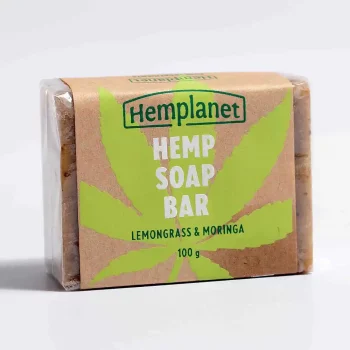This article is a rework of articles published by BBC Future and does not represent the views held by ITSHEMP, its creators, or employers. ITSHEMP is not responsible for the accuracy of any of the information supplied by the bloggers.
BBC Future (Image credit: Oskar Proctor)
Surrounded by verdant fields in Cambridgeshire, UK, Flat House stands as a testament to the potential of hemp as a sustainable construction material. While hemp is commonly associated with cannabis, its non-psychoactive industrial variant, hempcrete, is gaining popularity as a renewable and carbon-efficient alternative in the construction industry.
Hempcrete is created by mixing hemp hurd (the plant’s woody core) with a binder made from lime and water. The resulting material offers high thermal mass and insulation properties, reducing energy consumption and greenhouse gas emissions over time. Notably, hempcrete continues to absorb carbon throughout its lifespan, making it a valuable tool in achieving net-zero goals.
The construction industry, responsible for a significant portion of global carbon dioxide emissions, is increasingly turning to sustainable materials like hemp to decarbonize. However, several challenges, including regulatory changes, technical certification, and infrastructure development, must be addressed to scale up hemp production and make it more affordable.
Despite these hurdles, hempcrete has already found favor among eco-minded architects in Europe and North America. Its benefits, such as slow release of heat and moisture regulation, make it an attractive choice for energy-efficient and mold-resistant buildings. Architects and researchers are exploring hemp’s potential for various applications, including exterior cladding panels made from hemp fibers, which offer rain resistance.
France, where hemp cultivation was never criminalized, has emerged as a leader in industrial hemp production. The country has witnessed the construction of numerous hempcrete buildings, including a landmark seven-story social housing block in Paris. Architects and builders are increasingly recognizing hempcrete’s thermal performance, breathability, positive impact on well-being, and ability to sequester carbon.
While hempcrete has primarily been used in small residential projects, scaling up production and improving supply chains remain crucial. Investment in businesses, infrastructure, skills, and material certification is needed to overcome current limitations. Additionally, legal regulations surrounding hemp cultivation must be clarified in many countries to unlock its full potential.
Despite these challenges, the interest in hemp as a building material is growing globally. The UN’s recognition of hemp’s benefits in a recent report further emphasizes the need for legal clarity and regional cooperation to establish robust production chains.
As the construction industry seeks resource-efficient approaches, hempcrete offers a promising solution. Its fast growth, carbon-sequestering capabilities, and versatility position it as an ideal material for sustainable construction. By embracing locally sourced natural resources like hemp, the industry can transition to a more environmentally friendly and carbon-conscious future.








